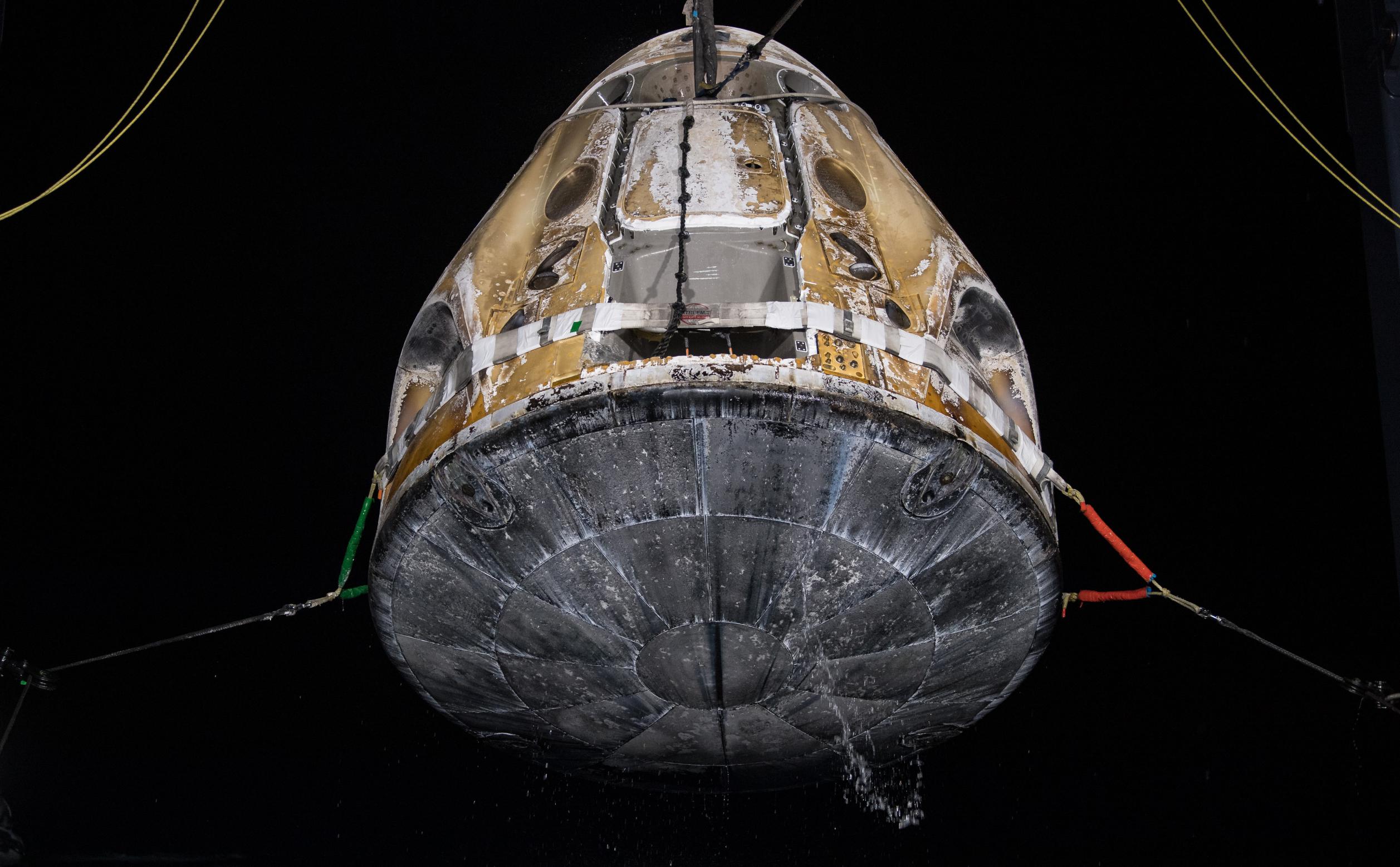

News
NASA denies SpaceX Crew Dragon propellant leak report, reveals unrelated heat shield defect
In a partial response to a report alleging evidence of several significant anomalies during a recent private astronaut launch that could affect a crew of NASA astronauts launched last month, the space agency has issued a statement denying those claims. However, the same statement simultaneously revealed that SpaceX recently discovered a different problem with a different Crew Dragon spacecraft component during ground testing.
On May 23rd, Space Explored published a report alleging that a SpaceX Crew Dragon spacecraft experienced major issues during Axiom-1, the company’s first all-private astronaut launch to the International Space Station (ISS). According to sourced info and a possible internal SpaceX memo, some of Dragon’s toxic propellant leaked during the 17-day flight, damaged or weakened parts of its heat shield, and “[caused] dangerously excessive wear upon reentry.” In general, the report appeared to be well-sourced and even alleged that NASA’s Engineering and Safety Center (NESC) had opened an investigation. Additionally, when approached for comment, neither NASA nor SpaceX were initially willing to speak on the record, which also meant that neither denied the accusations.
A day later, NASA provided an official statement to Space Explored explicitly denying that there has been any propellant leak, heat shield contamination, or excessive heat shield wear on any of “Dragon’s recent crew reentries.”
NASA also dismissed concerns about the reuse of a previously-flown Cargo Dragon 2 heat shield structure on Crew-4, which launched just two days after Axiom-1’s recovery and is scheduled to spend four to five more months in orbit. It also noted that the reuse of Dragon’s heat shield tiles – the structures that take the brunt of most reentry heating and are immersed in salt water after every mission – is extremely limited and has only been attempted on occasional Cargo Dragon missions.
Simultaneously, NASA revealed that “a new heat shield composite structure intended for flight on Crew-5 did not pass an acceptance test” at SpaceX’s Hawthorne, California Dragon factory. The unrelated test failure was blamed on a manufacturing defect and NASA betrayed no sign of serious concern in its statement, suggesting that the problem may be less serious than it sounds. In response, NASA says SpaceX will simply use a different heat shield composite structure for Crew-5, which is scheduled to launch no earlier than (NET) September 2022.
The data associated with Dragon’s recent crew reentries was normal – the system performed as designed without dispute. There has not been a hypergol leak during the return of a crewed Dragon mission nor any contamination with the heat shield causing excessive wear. SpaceX and NASA perform a full engineering review of the heat shield’s thermal protection system following each return, including prior to the launch of the Crew-4 mission currently at the International Space Station. The heat shield composite structure (structure below the tile) was re-flown per normal planning and refurbishment processes. The thermal protection system on the primary heat shield for Crew-4 was new, as it has been for all human spaceflight missions. SpaceX has only demonstrated reuse of selected PICA (Phenolic-Impregnated Carbon Ablator) tiles, which is a lightweight material designed to withstand high temperatures, as part of the heat shield on cargo flights.
NASA and SpaceX are currently in the process of determining hardware allocation for the agency’s upcoming SpaceX Crew-5 mission, including the Dragon heat shield. SpaceX has a rigorous testing process to put every component and system through its paces to ensure safety and reliability. In early May, a new heat shield composite structure intended for flight on Crew-5 did not pass an acceptance test. The test did its job and found a manufacturing defect. NASA and SpaceX will use another heat shield for the flight that will undergo the same rigorous testing prior to flight.
Crew safety remains the top priority for both NASA and SpaceX and we continue to target September 2022 for launch of Crew-5.
NASA – May 24th, 2022
Some oddities do remain. While NASA’s explicit refutation should be taken as the definitive final word on the matter, it’s still very unusual that NASA and SpaceX refused or were unable to quickly and publicly deny the claims within a few hours of being asked. That could simply be a consequence of NASA and SpaceX’s poor internal and external communication or both parties’ love for withholding information from taxpayers about systems and technologies that those same taxpayers have paid for.
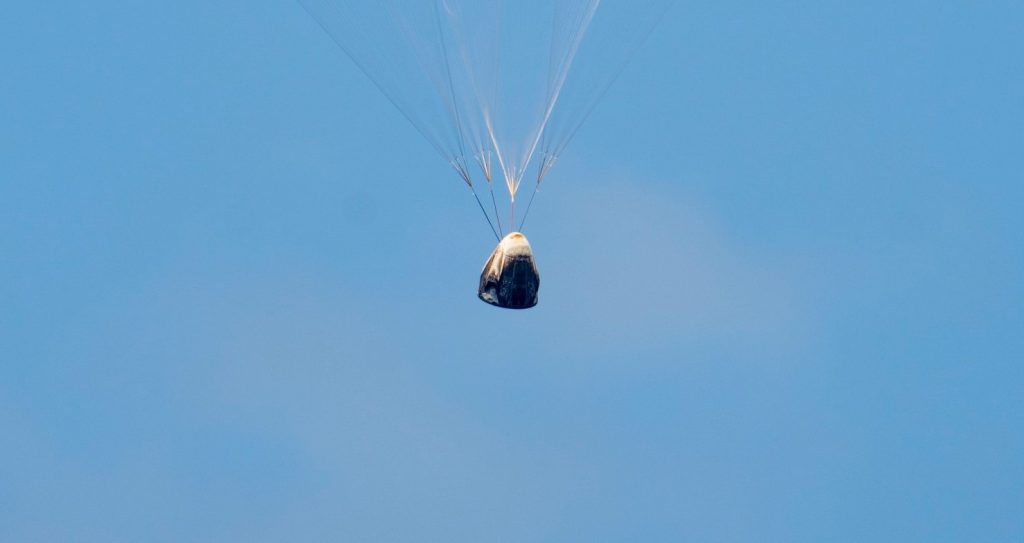
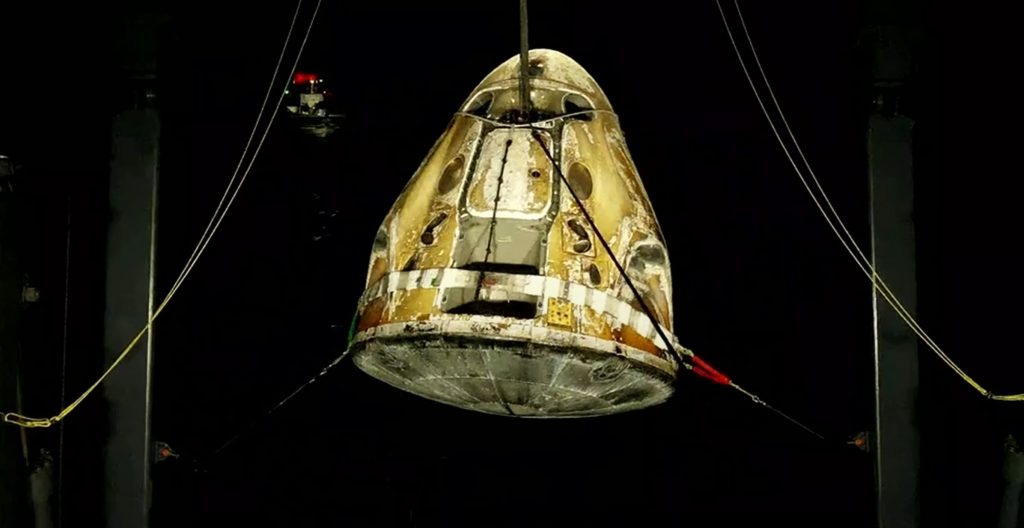
On the opposite hand, after Crew Dragon’s Demo-2 run-in with greater-than-expected heat shield wear in 2020, it’s almost impossible to imagine that NASA and SpaceX would have proceeded with Crew-4’s launch two days after Axiom-1’s recovery without confidently verifying that heat shield erosion was within normal bounds. SpaceX’s upgraded Phenolic-Impregnated Carbon Ablator (PICA-X) Dragon heat shield tiles are reportedly designed to erode [PDF] less than a centimeter of their circa-2017 ~7.5 cm (3 in) thickness after each reentry. Musk has gone even further, stating in 2012 that “[PICA-X] can potentially be used hundreds of times for Earth orbit re-entry with only minor degradation each time.” If true, it would be extremely difficult for even a brisk post-flight inspection of Axiom-1’s Dragon capsule to miss what Space Explored described as “dangerously excessive wear.”
In theory, during recovery, even a minute propellant leak should have also been immediately detected by SpaceX’s recovery team, as the very first part of the hands-on process involves a small team with gas masks and detectors approaching the floating capsule to ensure that it’s safe for others to approach. Crew Dragon’s liquid monomethylhydrazine (MMH) fuel and dinitrogen tetroxide (NTO) oxidizer are highly toxic in small quantities and MMH is a known carcinogen.
All told, news of a potential propellant leak and anomalous heat shield performance appears to have been a false alarm, although – coincidentally or not – a seemingly minor anomaly with an unflown Crew Dragon heat shield structure did occur earlier this month. Despite that anomaly, Crew-4 and Crew-5 are otherwise proceeding nominally and NASA appears to be content with Crew Dragon’s performance during several recent launches and recoveries.

News
Tesla extends FSD Supervised ride-alongs in Europe by three months
Needless to say, it does appear that FSD fever is starting to catch in Europe.

Tesla appears to be doubling down on its European Full Self-Driving (Supervised) push, with the company extending its demo ride-along program by three months until the end of March 2026. The update seems to have been implemented due to overwhelming demand.
Needless to say, it does appear that FSD fever is starting to catch in Europe.
Extended FSD demonstrations
Tesla EU Policy and Business Development Manager Ivan Komušanac shared on LinkedIn that the company is offering ride-along experiences in Germany, France and Italy while working toward FSD (Supervised) approval in Europe.
He noted that this provides a great feedback opportunity from the general public, encouraging participants to record and share their experiences. For those unable to book in December, Komušanac teased more slots as “Christmas presents.”
Tesla watcher Sawyer Merritt highlighted the extension on X, stating that dates now run from December 1, 2025, to March 31, 2026, in multiple cities including Stuttgart-Weinstadt, Frankfurt and Düsseldorf in Germany. This suggests that the FSD ride-along program in Europe has officially been extended until the end of the first quarter of 2026.
Building momentum for European approval
Replies to Merritt’s posts buzzed with excitement, with users like @AuzyMale noting that Cologne and Düsseldorf are already fully booked. This sentiment was echoed by numerous other Tesla enthusiasts on social media. Calls for the program’s expansion to other European territories have also started gaining steam, with some X users suggesting Switzerland and Finland as the next locations for FSD ride-alongs.
Ultimately, the Tesla EU Policy and Business Development Manager’s post aligns with the company’s broader FSD efforts in Europe. As per recent reports, Tesla recently demonstrated FSD’s capabilities for Rome officials. Reporters from media outlets in France and Germany have also published positive reviews of FSD’s capabilities on real-world roads.
News
Tesla’s six-seat extended wheelbase Model Y L sold out for January 2026
Estimated delivery dates for new Tesla Model Y L orders now extend all the way into February 2026.
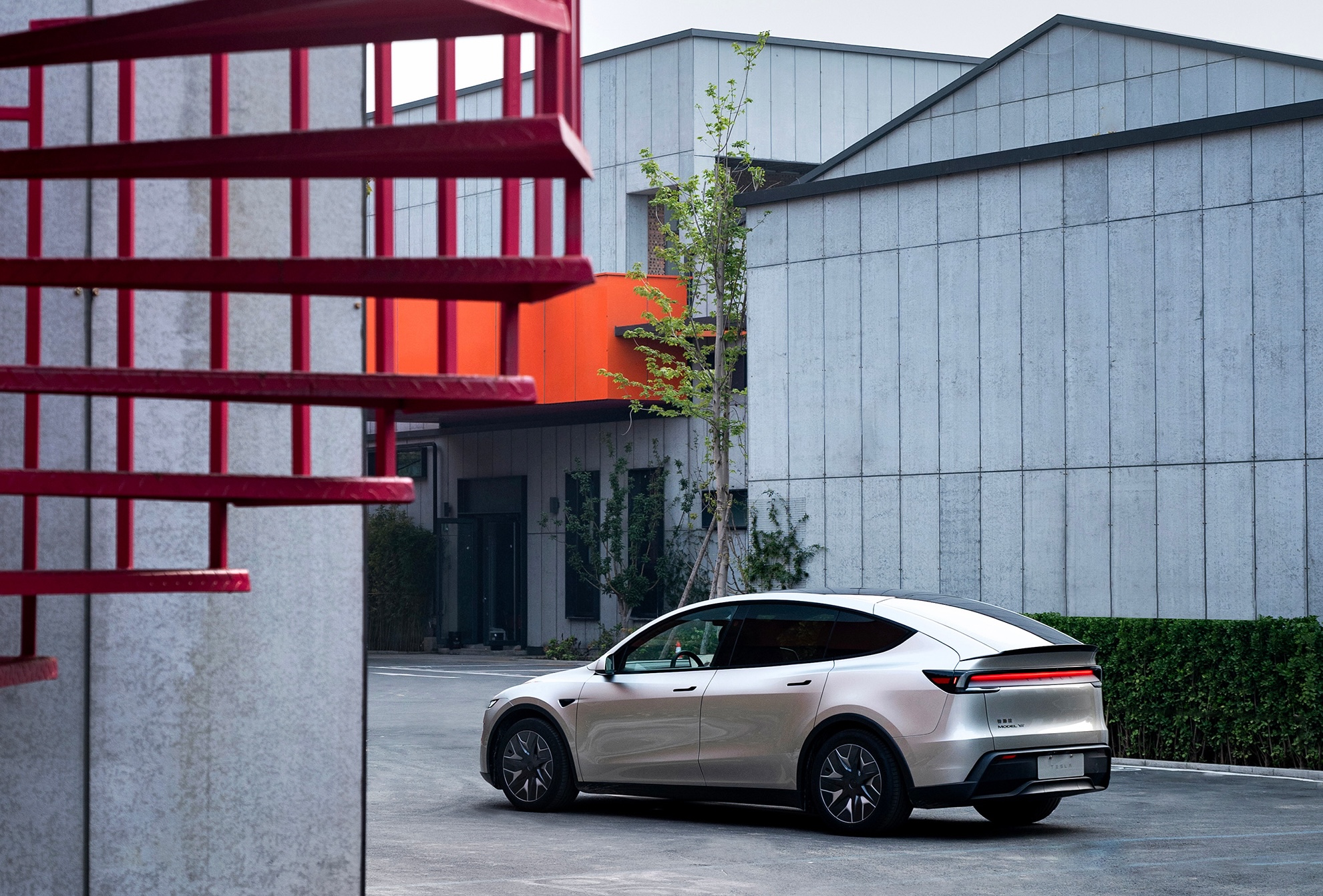
The Tesla Model Y L seems to be in high demand in China, with estimated delivery dates for new orders now extending all the way into February 2026.
This suggests that the Model Y L has been officially sold out from the rest of 2025 to January 2026.
Model Y L estimated delivery dates
The Model Y L’s updated delivery dates mark an extension from the vehicle’s previous 4-8 week estimated wait time. A detailed chart shared by Tesla data tracker @Tslachan on X shows the progressions of the Model Y L’s estimated delivery dates since its launch earlier this year.
Following its launch in September, the vehicle was given an initial October 2025 estimated delivery date. The wait times for the vehicle were continually updated over the years, until the middle of November, when the Model Y L had an estimated delivery date of 4-8 weeks. This remained until now, when Tesla China simply listed February 2026 as the estimated delivery date for new Model Y L orders.
Model Y demand in China
Tesla Model Y demand in China seems to be very healthy, even beyond the Model Y L. New delivery dates show the company has already sold out its allocation of the all-electric crossover for 2025. The Model Y has been the most popular vehicle in the world in both of the last two years, outpacing incredibly popular vehicles like the Toyota RAV4. In China, the EV market is substantially more saturated, with more competitors than in any other market.
Tesla has been particularly kind to the Chinese market, as it has launched trim levels for the Model Y in the country that are not available anywhere else, such as the Model Y L. Demand has been strong for the Model Y in China, with the vehicle ranking among the country’s top 5 New Energy Vehicles. Interestingly enough, vehicles that beat the Model Y in volume like the BYD Seagull are notably more affordable. Compared to vehicles that are comparably priced, the Model Y remains a strong seller in China.
Elon Musk
NVIDIA CEO Jensen Huang commends Tesla’s Elon Musk for early belief
“And when I announced DGX-1, nobody in the world wanted it. I had no purchase orders, not one. Nobody wanted to buy it. Nobody wanted to be part of it, except for Elon.”
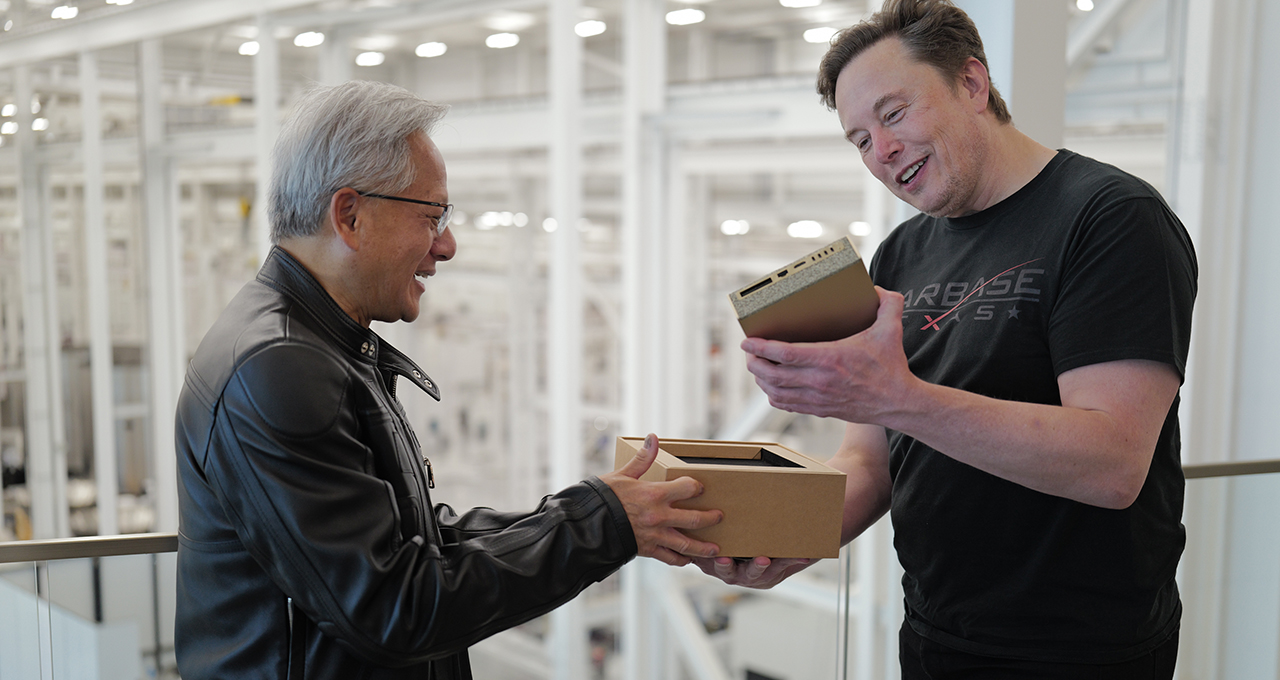
NVIDIA CEO Jensen Huang appeared on the Joe Rogan Experience podcast on Wednesday and commended Tesla CEO Elon Musk for his early belief in what is now the most valuable company in the world.
Huang and Musk are widely regarded as two of the greatest tech entrepreneurs of the modern era, with the two working in conjunction as NVIDIA’s chips are present in Tesla vehicles, particularly utilized for self-driving technology and data collection.
Nvidia CEO Jensen Huang regrets not investing more in Elon Musk’s xAI
Both CEOs defied all odds and created companies from virtually nothing. Musk joined Tesla in the early 2000s before the company had even established any plans to build a vehicle. Jensen created NVIDIA in the booth of a Denny’s restaurant, which has been memorialized with a plaque.
On the JRE episode, Rogan asked about Jensen’s relationship with Elon, to which the NVIDIA CEO said that Musk was there when nobody else was:
“I was lucky because I had known Elon Musk, and I helped him build the first computer for Model 3, the Model S, and when he wanted to start working on an autonomous vehicle. I helped him build the computer that went into the Model S AV system, his full self-driving system. We were basically the FSD computer version 1, and so we were already working together.
And when I announced DGX-1, nobody in the world wanted it. I had no purchase orders, not one. Nobody wanted to buy it. Nobody wanted to be part of it, except for Elon.
He goes ‘You know what, I have a company that could really use this.’ I said, Wow, my first customer. And he goes, it’s an AI company, and it’s a nonprofit and and we could really use one of these supercomputers. I boxed one up, I drove it up to San Francisco, and I delivered it to the Elon in 2016.”
The first DGX-1 AI supercomputer was delivered personally to Musk when he was with OpenAI, which provided crucial early compute power for AI research, accelerating breakthroughs in machine learning that underpin modern tools like ChatGPT.
Tesla’s Nvidia purchases could reach $4 billion this year: Musk
The long-term alliance between NVIDIA and Tesla has driven over $2 trillion in the company’s market value since 2016.








